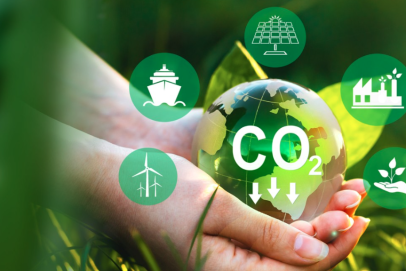Green ESG transformation in E-Learning: Optimize learning efficiency and protect the environment
Green transformation of ESG into eLearning not only improves our utilization of modern learning technologies but also creates a real environmentally conscious learning environment.
The term “ESG” has gained popularity in recent years when it comes to a company’s sustainable growth. In particular, the ESG (Environmental, Social, Governance) standard is a set of performance assessment and governance standards that are not only used by businesses but are also widely implemented in many different industries, including e-commerce and education. Applying ESG standards to e-learning sets the important goal of optimizing learning efficiency while reducing negative impacts on the environment.
ESG in elearning
Many applications of ESG have been and will be expanded with the goal of creating an eLearning online training platform, which will help to further the advancement of technology, and society in general, and the training sector in particular, specifically:
- Environmental:
- Energy saving: Hosting online classes or training sessions consumes less energy than using physical facilities. This includes using less energy for other utilities like heating, cooling, and lighting than traditional classrooms or training centers.
- Reduce radioactive emissions: Reduce the quantity of e-waste by encouraging the use of digital content and designing it with reuse principle. Reduce carbon emissions by reducing travel time to study locations. Integrate green technology into the e-learning infrastructure, such as cloud computing and renewable energy sources
- Enhance the environmental theme to implement green policies in daily operations. Using energy-efficient technology, employing servers powered by renewable energy sources, and incorporating sustainable practices into the design and development of e-learning platforms are a few examples.
- Using environmental technology: Virtual reality (VR) and augmented reality (AR) technologies can be integrated into e-learning platforms to create immersive learning experiences that center on environmental issues. For example, energy efficiency simulations or environmental protection scenarios can be created for students to better understand their impact on the environment. 73% of educators now see VR/AR as a transformative technology as a result of these engaging lessons.
- AI has the potential to intelligently manage server and learning device resources, optimize energy consumption, and contribute to the green transition. Over 60% of educational platforms are projected to employ AI-based learning pathways as a result of this drastic transformation.
- Social:
- Access and diversification: Provide e-learning platforms that are accessible to all members of our society, particularly those in underprivileged locations where the development and maintenance of physical educational facilities is restricted.
- Retrain and develop capacity: Provide retraining and capacity-building programs on social issues, and cultivate social diversity.
- Governance:
- Green policy and feedback: Develop policies for the sustainable management and operation of e-learning systems, including the use of renewable energy sources and feedback on energy consumption.
- Certification and evaluation: Evaluate and accredit e-learning courses and platforms based on sustainability and governance standards.
Practical application of ESG eLearning
Develop policies for the sustainable management and operation of e-learning systems, including the utilization of renewable energy sources and feedback on energy consumption. As the Green Transformation advances, keywords such as “Lifelong learning”, “digital learning” “#GreenLearning” #SustainableEducation and #EcoFriendlyLearning are becoming familiar. Some of the leading nations in this regard are as follows:
- Denmark: Denmark is known for its progressive environmental policies and has integrated green solutions into its education system. They shifted to an online learning system and use green technologies such as energy-saving servers and environmentally friendly online learning platforms.
- Sweden: Sweden is another nation well-known for its commitment to the environment. They have invested in eco-friendly eLearning systems, using energy-saving technologies and offering courses on sustainability and the environment.
- Finland: Finland has developed a number of green solutions in education and eLearning, such as applying energy-saving technology, employing online learning platforms and creating educational content on environmental protection.
- Netherlands: The Netherlands has also focused on developing sustainable eLearning systems, using green technologies and encouraging the use of online learning media to reduce paper and resource consumption.
- Canada and America: The US and Canada have also invested in sustainable eLearning projects that use green technologies and focus on developing environmental education programs.
Besides, eLearning platforms like Moodle and FPT.eLearning– popular eLearning platforms, are always evolving to meet the new future. The significance of Green Online Learning has been examined, along with Moodle’s role in promoting eco-friendly education.
Green transformation of ESG into eLearning not only improves our utilization of modern learning technologies but also creates a real environmentally conscious learning environment. Let’s share and apply these strategies to create a sustainable and environmentally friendly learning future.
Exclusively written by the FPT IS Specialist
Nguyen Anh Tu
Director of online training solutions FPT.eLearning
Reference source:
https://www.researchgate.net/publication/308765998_Green_Technologies_Enabling_Virtual_Learning_Environments
https://www.linkedin.com/pulse/future-digital-learning-7-trends-watch-2024-mda-training-sbb6f/













